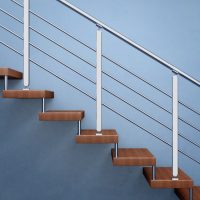Do Those Stairs Meet the California Safety Rules?

Thousands of people are injured every year in slip and fall or trip and fall accidents. Many of these accidents occur on staircases that are either not built to code or that have been left to deteriorate without proper maintenance. When railings are flimsy or nonexistent, when stair material is not sturdy or has been left to rot with mold and moisture, or when building owners employ cost-cutting measures in building staircases, people get injured. Read on to learn about California safety standards concerning staircases, and call a zealous Lancaster slip & fall accident attorney if you or a loved one has been hurt in a slip and fall on someone else’s property.
General California Stairway Construction Requirements
There are a number of guidelines concerning the construction and maintenance of stairways littered across the California Code of Regulations. Some apply to staircases generally while others apply in certain contexts (such as stairways used during construction as well as stair rails/handrails). Failure to adhere to these various guidelines can open building owners and employers up to statutory penalties, OSHA sanctions, and civil liability for any injuries that result from the lack of proper safety adherence.
Beginning with the general requirements: All stairways constructed in the State of California must be at least 24 inches in width and must be fortified with appropriate stair rails, handrails, treads, and landings. Railings and toeboards must meet the specifications laid out in Article 16 in the California Code of Regulations. For example, under section 1620, railings must be “constructed of wood or in an equally substantial manner from other materials” and must consist of top rails of an appropriate height as well as screens, meshes, or midrails. Railings must be capable of withstanding a force of at least 200 pounds applied to the top rail. Many other specific requirements apply.
California’s Building Code also has much to say about stairways and handrails. Section 3214 specifies that handrails must be present on both sides of staircases that are greater than 44 inches in width. The Building Code includes specific requirements concerning stair riser heights (i.e., the vertical distance from stair tread to tread). Stair riser heights must be between 4 inches and 7 inches, per the appropriate measurement. Stairway landings at the top and bottom of each stairway are likewise subject to certain requirements concerning width, and stairways must be appropriately marked on the lower tread of each stair.
What if I Was Injured in a Stairway Slip and Fall?
The above discussion serves as an example of the complex, in-depth analysis that can go into any stairway slip and fall claim. If you were injured on someone else’s staircase, there is a very good chance that you are not to blame. Safety standards exist because of known risks; if a building developer builds a staircase that is not up to code, then they are creating the risk of people falling and injuring themselves.
If you are hurt on a staircase, make sure to take photos of the staircase and the surrounding area, especially where you slipped and fell. Those photos will serve as a starting point for you and your attorney to investigate whether the building owner or operator allowed an unsafe staircase in their building. Your slip and fall staircase injury attorney can go through the myriad stairway design regulations in order to determine if you were placed at unreasonable risk by shoddy craftsmanship or simple disregard for safety rules.
If you or a loved one has been injured due to a faulty staircase on someone else’s property in California, talk to a dedicated and successful Lancaster slip & fall accident attorney about pursuing a claim for damages by calling the Kistler Law Firm at 661-206-6990.
